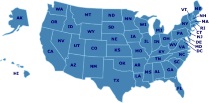Literature Based Curricula
All learning does not need to come through a textbook. In fact, using the world of books, especially "living books," will excite interest in your childen, will bring history alive, and can awaken them to new perspectives and ways of learning.
Resources
A History of Science
A History of Science is not a textbook, but is a guide to help parents and children study science through literature. It is intended for children in elementary grades.
Five in a Row
Five in a Row provides a step-by-step, instructional guide using outstanding children's literature for children ages 4-8. Unit studies are built around each chosen book. There is a series for preschoolers called "Before Five in a Row," along with other volumes for older children.
Beautiful Feet Books
Beautiful Feet Books publishes Rea Berg's "History Through Literature" study guides. They offer fine children's literature, including the D'Aulaire biographies and Genevieve Foster's "World" titles. This is a great resource for anyone wishing to utilize an approach that studies history through literature.
Total Language Plus
Total Language Plus is an innovative curriculum focused on teaching thinking and communication skills using literature as a base. The authors believe an integrated system is more efficient than a fragmented approach, discovery style learning is the most effective and learning should be enjoyable. The "discover, do, drill" method is employed throughout the TLP program with activities focusing on thinking skills. These comprehensive novel studies cover spelling, grammar, punctuation, vocabulary, analytical and critical thinking, comprehension, writing, listening, and field trips and projects.
Featured Resources
As an Amazon Associate, we earn from qualifying purchases. We get commissions for purchases made through links on this site.
A Twaddle-Free Education: An Introduction to Charlotte Mason's Timeless Educational Ideas
Are you disappointed with dumbed-down reading material (“twaddle”) written for children? Do you wish for your children to feast their hearts and minds on noble ideas, fine art, and great literature? Are you hoping your children gain an appreciation of nature and a deep understanding of natural sciences? Most importantly, do you want your children to develop a lifetime love of learning? If you answered “yes,” you may discover a Charlotte Mason-inspired twaddle-free education is just what you’ve b...
Beautiful Feet Books
Beautiful Feet Books publishes Rea Berg's "History Through Literature" study guides. They offer fine children's literature, including the D'Aulaire biographies and Genevieve Foster's "World" titles. This is a great resource for anyone wishing to utilize an approach that studies history through literature.
Real-Life Homeschooling: The Stories of 21 Families Who Teach Their Children at Home
The book that shows homeschooling in action! What does it really mean when parents say they homeschool their child or children? For Rhonda Barfield -- a homeschooler for the past 10 years -- the definition is as diverse as the 21 families she studies in this eye-opening book. Real-Life Homeschooling From the city to the country, apartments to split-levels, you'll enter each household and see education in action. Discover the challenges and rewards of tailoring instruction to each child's nee...
Rhythms of Learning : What Waldorf Education Offers Children, Parents & Teachers (Vista Series, V. 4) (Vista Series, V. 4)
In numerous lectures and through teaching teachers for the first Waldorf school, Rudolf Steiner described and suggested methods of education based on the rhythmic unfolding of spirit, soul, and physiology in children as they grow. In each section of "Rhythms of Learning," Waldorf teacher Roberto Trostli introduces the reader to lectures on specific aspects of children's rhythms of development and how Waldorf education responds. We are shown how Waldorf teachers must, through their own inner capa...
Catholic Home Schooling: A Handbook for Parents
Mary Kay Clark, the director of the accredited and successful Seton Home Study School shows parents why and how to teach their children at home, giving scores of practical examples and setting forth the spiritual, moral and academic advantages. The book includes chapters by several experts and covers Catholic curriculum, textbooks, Catholic family life, legal aspects, discipline, socialization, home management, using computers, children with learning disabilities, single-parent home schooling, t...




